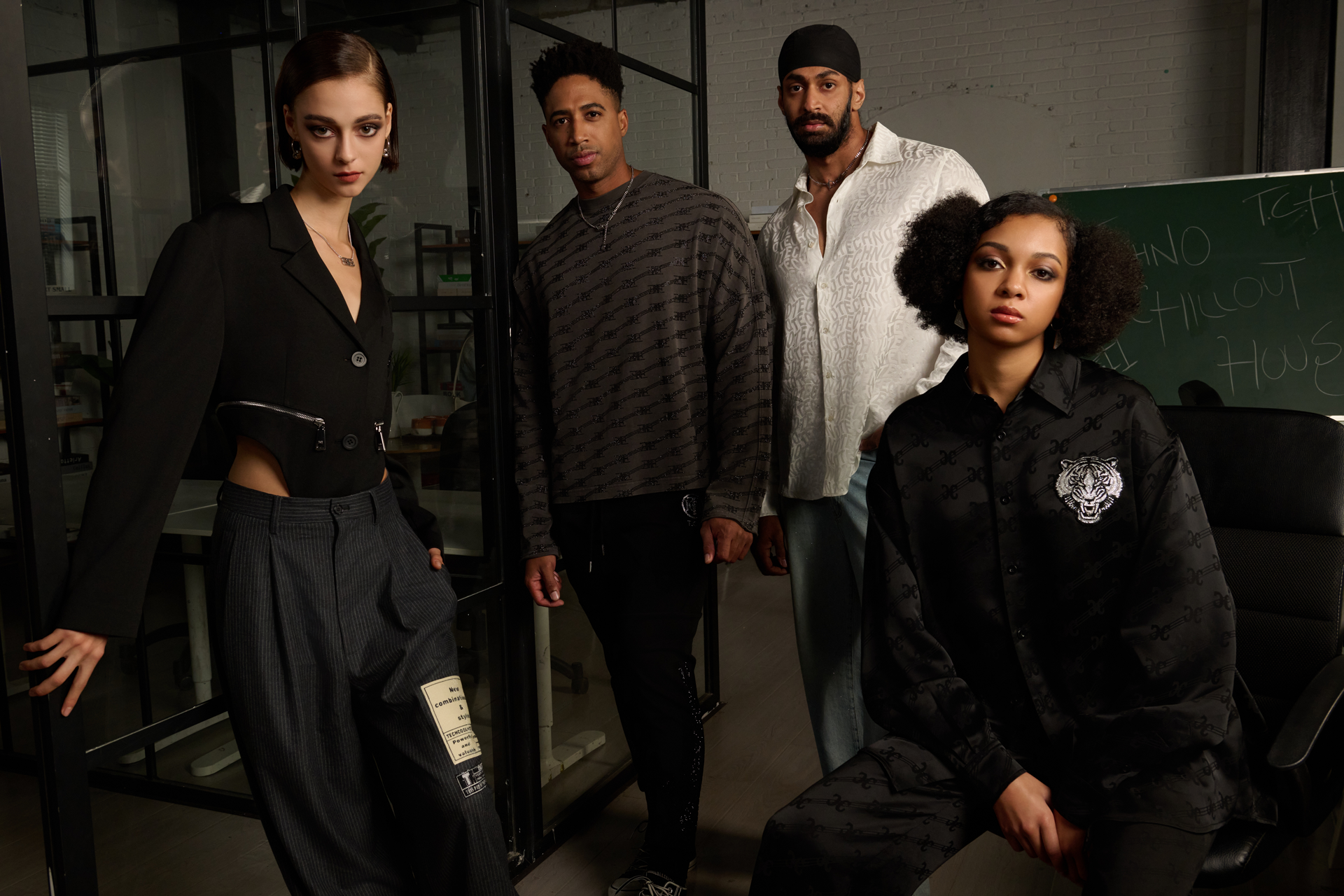المقال: What side is the zipper on women's jackets?

What side is the zipper on women's jackets?
What side is the zipper on women's jackets?
"Fashion is the armor to survive the reality of everyday life." — Bill Cunningham
Many wonder: what side is the zipper on women's jackets? The answer lies in the history and practicality of fashion design. Most women's jackets have zippers on the left side. This is different from men's jackets, which usually have them on the right.

Why does this matter? About 70 to 95 percent of people are right-handed. In the past, women's clothes had buttons on the left for right-handed people to help with dressing. This was especially true when servants dressed women of certain classes.
But it's not just history. The way a jacket's zipper is placed also reflects modern fashion and what people like.
Interestingly, the preference for zipper placement varies around the world. In Asia and Europe, many prefer right-side zippers. In South America, it's the left side. Gideon Sundback, who invented the modern zipper, made a change for the USA market. This led to the common left-hand placement we see today.
This shows that the placement of a jacket's zipper is shaped by culture and practical needs. It's not just a standard.
Looking at clothing design, we see how it changes to fit different people's needs. Big stores like ASOS and Macy's are now offering gender-neutral clothing. This suggests a future where traditional gender lines fade.
Historical Origins of Women's Jacket Zippers
Women's jacket zippers have a long history, tied to important times like the Victorian and Renaissance eras. This journey shows how fashion and practicality have merged over the years. It highlights key moments that have lasted for centuries.

The Victorian and Renaissance Eras
The Victorian and Renaissance times deeply influenced how clothes were made. They made sure buttons were on the left side of garments. This was because upper-class women needed servants to help them dress, and most servants were right-handed.
It made fastening the many buttons on their clothes easier. This tradition shows how fashion and practical needs were linked.
The Influence of Servants and Button Placement
Servants also played a big role in dressing women back then. Sumptuary laws in the Victorian era made sure clothes were not too fancy. This made buttons a symbol of wealth and status.
Now, we wonder how zippers became part of women's clothes as early as 1922. Some say Louise Barnes Gallagher introduced them, but it's not clear.
Gideon Sundback, a Swedish-American engineer, is often credited with creating the modern zipper. He patented the first true zipper in 1917. Before that, he made "hookless fastener no.1" in 1913, which was a big step forward.
Elsa Schiaparelli made zippers popular in fashion with her 1935 winter collection. She used plastic zippers, making them both useful and fashionable. This changed how people saw zippers in clothing.
Zippers became more common in the 1930s, like in a 1937 tennis dress. But they didn't become a must-have in women's clothes until the late 1950s. This shows how zippers slowly but surely became part of everyday fashion.
The story of zippers in women's fashion is full of history and innovation. From the careful button placement in old clothes to the modern zippers we know today, it's a tale of blending practicality with style.
The Popularity of Left-Sided Zippers in Women's Clothing
Left-sided zippers in women's clothing are still a big deal in today's fashion. They have a long history that started for practical reasons. Now, they fit well with the latest fashion trends.
Breastfeeding and Practicality
Left-sided zippers in women's clothes go back to making breastfeeding easier. They were especially useful for right-handed moms, who make up 70 to 95 percent of the world's population. This design helps moms manage their clothes while holding their babies.
Now, this feature is key in women's clothing, offering both ease and a link to the past.

Modern Fashion Trends
Today, left-sided zippers are still popular in fashion. They started for practical reasons but have become a standard in women's clothes. In Asia and Europe, right-sided zippers are more common. But in many places, left-sided zippers are still the norm.
Younger people, especially Gen Z, are pushing for more gender-neutral fashion. Big brands like ASOS, H&M, and Macy's are launching lines for everyone. Stars like Beyoncé and Celine Dion support these changes. This shows how fashion is moving towards more neutral designs, keeping left-sided zippers in style.
What side is the zipper on women's jackets?
When it comes to zipper side preference in women's jackets, we look at history and current fashion. Most women's jackets have the zipper on the left side. This tradition started in the Victorian and Renaissance times when women wore buttons on the left.
Today, the left-sided zipper is still common in women's jackets. Surveys show that women like left-sided zippers, but it doesn't greatly affect their choice of jacket. This mix of old and new shapes our modern clothes.
Various jackets like bomber, café racer, biker, and aviator bomber jackets follow this rule. Women's jackets often have zippers on the left side, seen as more practical because of our habits and history. Some believe men's zippers on the right side reflect right-handedness from Victorian times, linked to military uniforms.
A study found that 86.36% of jackets in a household had the zipper on the right side. This shows that history matters, but so do fashion and the designer's choice. Designers can change the zipper's location for looks or function.
In the US, we stick to this gender-based zipper rule, following Victorian times. Gideon Sundback's zipper designs helped make this standard. Canada prefers right-sided zippers, while the US goes for left-sided ones.
The way we place zippers is a mix of tradition, usefulness, and fashion. Even with different opinions around the world, these norms show the lasting impact of history on today's clothes.
Right-Handed Preference and Its Impact on Zipper Placement
In the world of clothing design, the right-handed dominance of our population is key. About 90% of people are right-handed, which shapes how clothes, like jackets, are made. This means zippers are often on the right side for easy use by right-handers.
Buttons and zippers have a long history, influenced by culture and need. For instance, women's clothes often have zippers and buttons on the left side. This dates back to the Renaissance and Victorian times when complex clothing designs needed right-handed help to put on.
Men's and women's clothes differ in button and zipper placement for practical and symbolic reasons. Men's clothes have right-sided buttons and zippers, making it easier for right-handers to reach weapons. This was important in military times and for sword use.
Women's clothes have left-sided buttons for various reasons, like breastfeeding, social norms, and to show gender. These historical reasons still affect today's fashion, keeping designs interesting. So, zipper functionality in women's jackets still follows these old patterns.
Today, designers blend history with modern needs and tastes. By knowing about right-handed dominance, they can innovate and honor tradition. This way, zipper functionality suits a wide range of customers.
The Role of Garment Designers
Garment designers play a big role in fashion, especially with zipper placement. They balance their own style with market trends. This balance decides if a zipper goes on the left or right side of a jacket. It also depends on the region where the clothes will be sold.
Designer Choices and Market Preferences
Designers are key in choosing where to put zippers on clothes. Elias Howe, Jr. patented the first automatic clothing closer in 1851. Whitcomb Judson came up with the "clasp locker" in 1893. Gideon Sundbäck perfected the zipper in 1917.
Zippers became popular in the 1930s, even though they were more expensive than buttons. But people liked their practicality. This shows how designers make innovations popular by considering cost and benefits.
| Year | Innovator | Invention |
|---|---|---|
| 1851 | Elias Howe, Jr. | Automatic, continuous clothing closer |
| 1893 | Whitcomb Judson | Clasp locker |
| 1917 | Gideon Sundbäck | Separable closure (modern zipper) |
Regional Variations in Zipper Placement
Regional styles affect zipper placement, with designers making choices for specific markets. For instance, Gideon Sundback's work led to left-side zippers in the U.S. and right-side zippers elsewhere. This shows how design is shaped by cultural and regional trends.
Designers make sure preferences are met. This is true for practical needs in children's clothes or for the sophisticated tastes of different markets.
The Global Perspective on Zipper Placement
Looking at zipper placement around the world shows us how fashion varies greatly. Each region has its own way of placing zippers, reflecting their culture and history.
In Europe, fashion sticks to traditional zipper spots. But in Japan, simplicity and practicality lead to unique designs. In the U.S., zippers often show if a garment is for men or women, a trend not seen as much elsewhere.
Here’s a look at how different places place zippers:
| Region | Common Placement | Influences |
|---|---|---|
| Europe | Traditional, often left-sided for women | Historical fashion conventions |
| Japan | Varied, often focused on ease of use | Minimalistic design ethos |
| United States | Gender-specific, left for women | Gender distinction norms |
Zippers started in the 1930s, becoming popular in sportswear for keeping warm. For a long time, men and women wore zippers on different sides. But now, with more unisex styles, these rules are changing.
The BBC changing its dress code might make quarter-zip tops more common at work. Celebrities like the Duke of Sussex and Rishi Sunak wearing them shows they're in style.
Common Myths and Misconceptions
In the world of fashion, many myths about zipper placement still exist. People often think that the placement of zippers comes from complex history or social rules. But, the truth is simpler and more practical. There's no solid proof to explain why women's zippers are usually on the left side. This leaves room for different views and keeps these fashion traditions alive.
Leather jackets also have many myths surrounding them. Some think they're only for winter, but they can be worn in summer too. Also, many believe they only come in black or brown, but they actually come in many colors like red, green, white, yellow, purple, and blue. Proper care and cleaning methods also show that leather jackets don't fade fast or are hard to keep up.
| Myth | Reality |
|---|---|
| Leather jackets only come in black or brown | Available in various colors such as red, green, white, yellow, purple, and blue |
| Suitable only for winter | Comfortable in warmer weather, making them suitable for summer |
| Colors fade quickly | Proper care and specialized products prevent color fading |
| Hard to maintain | Specialized cleaning techniques make maintenance easier |
| Fabric garments are superior | With proper maintenance, leather is more durable than fabric |
| Durability depends on price | The manufacturing process is similar across price ranges |
| Not repairable | Can be repaired using leather repair kits |
| Become rough over time | Leather jackets become softer with wear |
| Should not be washed | Washable and waterproof |
| Made exclusively from cowhide | Also made from sheep and other animal hides |
Jeans also have myths that need debunking. Many think less than 20% of men's jeans have buttons, with zippers being more common. This goes against the idea that zippers are mainly for women's clothes. Also, the idea that wearing jeans in a bathtub shapes them perfectly is wrong. Today, 'Shrink-to-fit' fabrics are used in only about 5% of jeans.
Debunking these fashion myths helps us understand clothing design and zipper placement better. It's important to use facts to challenge these misconceptions.
Knowing these myths helps you make better choices in fashion. It shows the practicality and variety in clothing design.
Practical Tips for Choosing the Right Jacket
Choosing the right women's jacket means focusing on fit, comfort, and functionality. The zipper's side might seem crucial, but it's less important than other factors. For example, lightweight down jackets are perfect for hiking or backpacking. They are less than 16 ounces.
On the other hand, heavyweight down jackets are over 16 ounces. They're great for camping or watching sports. The jacket's weight and insulation quality matter a lot.
Insulation quality is key. High-quality jackets use down with a fill power of at least 600. This means they're warm but not too heavy.
For wet conditions, look for lightweight down jackets with a DWR finish. They stay warm even when damp. Synthetic jackets are cheaper but don't beat down in warmth or compressibility.
Your personal style should guide your choice. Pick a zipper style that's easy to use with your dominant hand. Designers suggest zippers with teeth for heavy fabrics. This ensures they last longer and are easier to use.
If you like tailoring, consider separate zippers for jackets or cardigans. This makes them more versatile. Choosing a jacket that fits your needs and style ensures you'll be happy and comfortable.
FAQ
What side is the zipper on women's jackets?
Women's jackets usually have zippers on the left side. This tradition comes from fashion history and still affects how clothes are made today.
Why do women's jackets zip on the left?
The left-side zipper on women's jackets comes from old times. Back then, rich women needed help to get dressed. Right-handed servants could easily zip up their clothes for them.
Are women's jacket zippers always on the left?
It's common, but not always the case. Designers might place zippers differently for style, function, or local tastes. So, it can change.
What was the influence of servants on button and zipper placement in historical fashion?
Right-handed servants helped dress their employers. They made it easier to close clothes with left-side zippers.
Is the left-side zipper placement practical for modern women?
Yes, it's useful, especially for right-handed moms. It makes breastfeeding easier and helps with managing a baby while dressed.
How does right-handed dominance impact zipper placement on clothing?
Right-handedness affects how clothes are made. Things are often placed on the right for easy opening. But, women's fashion often reverses this for historical reasons.
Do garment designers have flexibility in zipper placement?
Yes, designers can pick where to put zippers based on who they're making clothes for and where they're sold. Their choices shape fashion in different places.
How does zipper placement vary globally?
Around the world, zipper placement changes with local fashion trends. For example, Europeans and Asians might prefer right-side zippers, while South Americans often go for left.
Are there any myths about zipper placement on women's jackets?
Yes, there are myths and wrong ideas out there. Some think left-side zippers come from big historical events or social rules. But, the real reasons might be simpler or just happenstance.
What should you consider when choosing a jacket?
Look for a jacket that fits well, is comfy, and works for you. Don't worry too much about the zipper's side. Think about how it suits your dominant hand and what you like.

